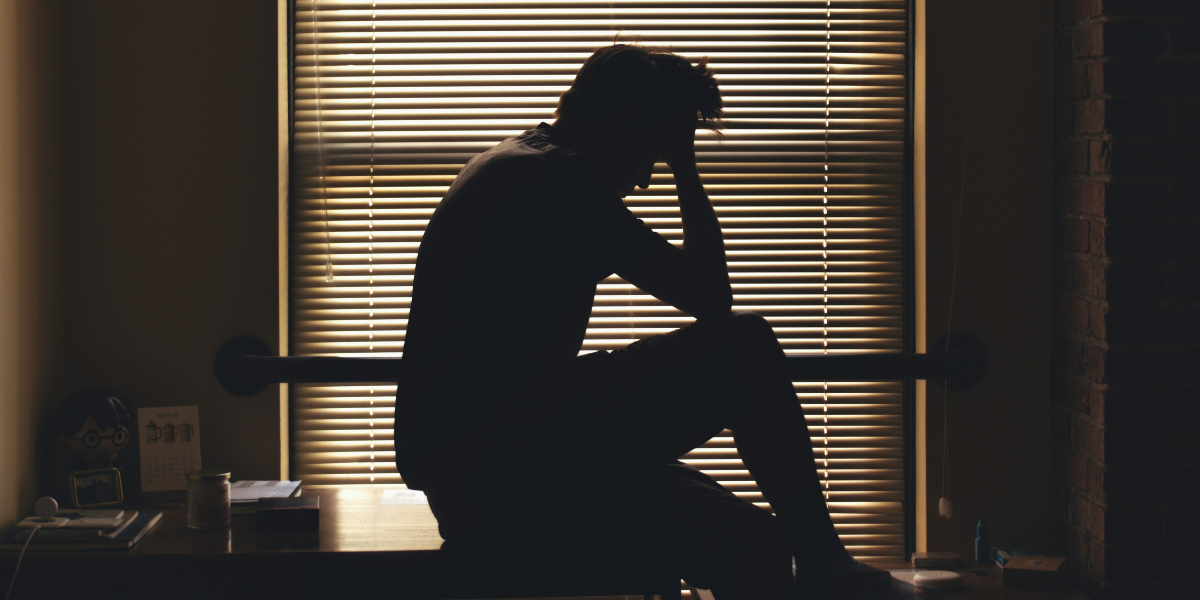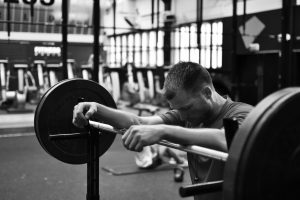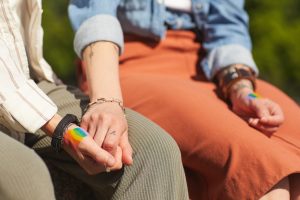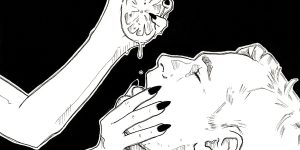Eating disorders in men: Masculinity, body image and silent suffering
By: Justin Kolber

Content warning: This article discusses eating disorders, suicide and mental health, binge eating and body image in detail.
In college, I once didn’t speak for an entire month.
I wore headphones on campus, endured gruelling workouts at the gym, chomped heaps of dining hall chicken breasts alone, sat in the back of class, and did stealth runs for vending machine candy using cargo pants to hide my snacks.
No one noticed.
Image by: Adam Custer. For information, support and advice on disordered eating or body image issues, visit Eating Disorders Victoria.
Eating disorders are a “silent scream”.
According to Dr Molly Perlman, Chief Medical Officer of Monte Nido, a specialised treatment centre for eating disorders, “millions of people are hiding an eating disorder every day.”
The prevalence of eating disorders is rising for boys and men. Our silence is often compounded – with men being less willing to talk about it, and feeling lonelier and more isolated than ever. Just like I was.
Recently, men have started to break the silence around disordered eating, working out, and the ripped male body stereotype. Seattle Mariners catcher Mike Marjama shared his story of muscle obsession and bulimia. Zac Efron said he got sick from diuretics while staying shredded on the set of Baywatch. Treatment books by doctors, and self-help articles by experts, abound.
But how many young men know about all this discussion? Not many, I would argue.
I reached out to a few experts via email for their insights on the matter.
“Many people, including healthcare professionals, are still unaware that eating disorders can occur in men,” said Dr Jason Nagata, a physician specialising in eating disorders at the University of California, San Francisco and author of the book Eating Disorders in Boys and Men.
As noted by Dr Sarah Smith, an attending physician in the department of psychiatry at The Hospital for Sick Children in Toronto, known as SickKids, “Males with eating disorders often speak about friends, families, clinicians and others in position of authority … not recognising their eating disorder symptoms despite their severity due to their sex or gender.”
The voices speaking out on this issue are still too diffuse.
And as author Caitlin Moran observed in this review of her new book What About Men?, there is no coordinated male body positivity movement on social media to counteract the flood of unrealistic “thirsty shirtless” Instagram images (even as a recent report noted Instagram’s algorithm prioritises exposed skin).
In the depths of my own illness, it was hard for me to relate to the established voices in the body image space.
Professional athletes and movie stars got paid pretty well for their jacked bods. And the self-help books by doctors and experts – well, did they ever suffer the pain of the squat rack and the shame of bingeing? It didn’t seem like it.
By contrast, I was just a regular gym rat who knew all too well the extremes of body pressure. I felt alone in my too-skinny skin – but I wasn’t.
Nearly seven million men will have an eating disorder at some point, most commonly binge eating disorder. One in 10 gym-going men will suffer from muscle dysmorphia, also known as “bigorexia” – a body image disorder focused on becoming bigger and more muscular.
As a sensitive boy in the 1980s, I hungrily consumed thousands of images of bare chests and ripped midsections: Conan the Barbarian, Rocky, Mr. T, Hulk Hogan, and countless comic book characters that got more supersized and super-shredded with each issue.
I absorbed it all. A man was only as manly as his muscles: that message was loud and clear even before TikTok workout videos.
Over email, Dr Nagata said: “Men who post on image-based social media may receive positive reinforcement for their appearance. They may be more likely to engage in muscle-enhancing behaviours to achieve a certain body ideal, and the positive feedback they receive from followers may lead to a vicious cycle and bigorexia.”
In high school and college, I played sports and obsessively drank weight gainer shakes trying to bulk up. Then came the secret starving and binge eating. I was angry all the time, in the repressed way, where I didn’t know that I was rageful. On the surface, I simply went to the gym, then speed-scarfed junk food to the point of crippling, bloated stomach pains.
It was fine, I told myself. Just eat healthier.
As a young adult in the early 2000s, binge eating wasn’t yet recognised as its own affliction (that came in 2013). Focusing only on my outer appearance, I figured my six pack made me ‘healthy’.
Additionally, as an athlete, I was unaware that we are two to three times more likely to develop an eating disorder than non-athletes – especially in sports like bodybuilding, wrestling, boxing, cycling, swimming and track (all of which I dabbled in).
Naturally, my eating disorder kept spiralling. Unbeknown to me, I wasn’t alone. A recent study found that hospitalisations for eating disorders in male patients increased by 400 per cent between 2002 and 2020. And yet, treatment, awareness and research in men’s eating disorders remains relatively limited.
I contacted Dr Cynthia M. Bulik, Founding Director for UNC Center of Excellence for Eating Disorders about the state of this research.
“Pretty much everything we know about eating disorders – risk factors, course of illness, outcomes, and even the diagnostic criteria themselves – are all based on decades of work with females,” she told me.
Many of my friends have suffered in silence, too.
Some didn’t make it out alive, like James, my childhood friend. As kids, we’d play-wrestled for years, dreaming of being superheroes. We wanted to help the helpless – you know, other people – not knowing we were broken ourselves.
James joined the army and had a career as a Mixed Martial Arts fighter. We lost touch as adults. I learned of his fate all too late; he took his own life at age 40. Though I’ll never know exactly what demons he faced, I know that we were both steeped in a dominant brand of machismo masculinity that taught us to repress our feelings and hyper-emphasised physical strength over emotional balance.
When discussing her book BoyMom, Ruth Whippman noted that the statistics around men’s despair are starting to be a cliché. It’s true. But the consequences are deadly serious.
In the USA, men are four times as likely as women to die by suicide. This gender disparity is similar in Australia. These statistics are further compounded and complicated by factors such as age, race, class and LGBTQIA+ identity (noting that many of these studies focus on binary gender or sex only).
Every day, I want so badly for James to be alive. And for many men who are alive – who may be struggling in silence – I hope they find their full selves before it’s too late. This stuff matters, and it’s all connected: masculinity, mental health, body image and food.
I think it’s time for men to share our vulnerability, starting with the body. Especially given our still-very-current obsession with inflated forearms and shrink-wrapped midsections (looking at you, Hollywood, where some personal trainers estimate that 20 per cent of male actors use performance-enhancing drugs like steroids).
As Whippman observed about the average boys and men she researched: everyone’s talking about them, but no one’s talking to them. In her article, she concluded, “[Men] are more than ready to talk. We just need to make sure we are listening.”
Well, we’re right here, and some of us are speaking out.
Today, I am so grateful to no longer be silently screaming. And to put my gratitude into action, I’m ready to put my voice out there, in case someone wants to tune in.
If this article brought up difficult topics for you, you can call Butterfly Foundation’s National Helpline on 1800 33 4673.
For information, support and advice on disordered eating or body image issues, visit Eating Disorders Victoria.
In the USA, the American Institute for Boys and Men and Equimundo provide resources for men’s mental health.
If you or someone you know is in crisis, call Lifeline on 13 11 14.














